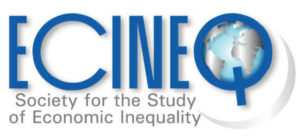Accounting for Heterogeneity in Growth Incidence in Cameroon Using Recentered Influence Function Regression
Working Paper 2013-288
Abstract
This paper frames growth incidence analysis within the logic of social impact evaluation understood as an assessment of variations in individual and social outcomes attributable to shocks and policies. It uses recentered influence function (RIF) regression to link the growth incidence curve (GIC) to household characteristics and perform counterfactual decomposition à la Oaxaca-Blinder to identify sources of variation in the distribution of consumption expenditure in Cameroon in 2001-2007. We find that the structural effect is driven mostly by the sector of employment and geography and is the main driver of the observed pattern of growth. The composition effect accounts for the lion’s share of the observed variation in the social impact of growth. In particular, that effect tends to reduce poverty while the structural effect tends to increase it. This conclusion is robust with respect to the choice of poverty measures and RIF regression models.
Authors: B. Essama-Nssah, Paul Saumik, Léandre Bassolé.
C14, C31, D31, I32, O55, R11
